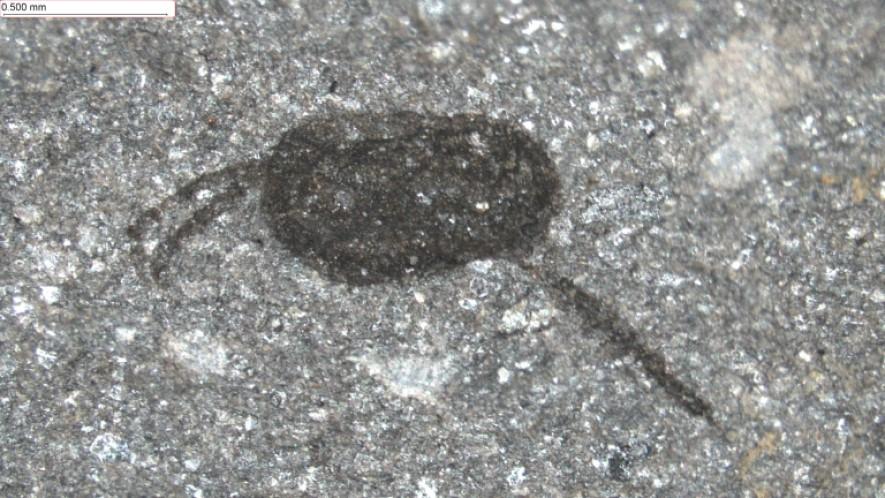
Submitted by Debbie Birkett on Tue, 02/05/2023 - 11:42
In an unexpected outcome of the Covid lockdowns, a new fossil site has been discovered in Wales. It is one of the very rare sites where soft tissues and complete organisms are preserved in abundance, rather than just hard parts like shells and bones. These exceptional deposits tell us much of what we know about the evolution of life. Among the best of them are the famous Burgess Shale-type faunas, named after the location in Canada. There are many of these fossils in Cambrian rocks (when recognisable animal fossils first appear, some 542–485 million years ago) but almost none after that time. As a result, palaeontologists know a lot about Cambrian marine life, but far less about how it evolved in the periods immediately afterwards. The newly discovered site in Wales is from the middle of the succeeding Ordovician Period, some 462 million years ago, and rivals the best of the Cambrian deposits in terms of the diversity of fossils and extraordinary levels of preservation. One of the striking features of this deposit is that it contains relatives of some Cambrian ‘weird wonders’, alongside more modern-looking forms such as horseshoe crabs and starfish. So far, well over 150 species have been recovered, almost all of them being new and many very small, at only 1–3 mm long.
This remarkable new assemblage, known as Castle Bank, was discovered during the 2020 lockdown by Dr Joe Botting and Dr Lucy Muir, near to their home in Llandrindod, central Wales. Dr Stephen Pates, a Herchel Smith Postdoctoral Fellow in the Department of Zoology, started collaborating with Dr Botting and Dr Muir by studying fossils together on Zoom during 2020, and was able to visit the site in 2021 when restrictions started to ease. A paper describing the new fauna has been published in Nature Ecology and Evolution, but this is only the first stage. The purpose is to announce the discovery of this fossil assemblage, and what it can potentially tell us, but later work will start to describe all the fossils in detail, revealing a hitherto unseen marine community from 462 million years ago.
